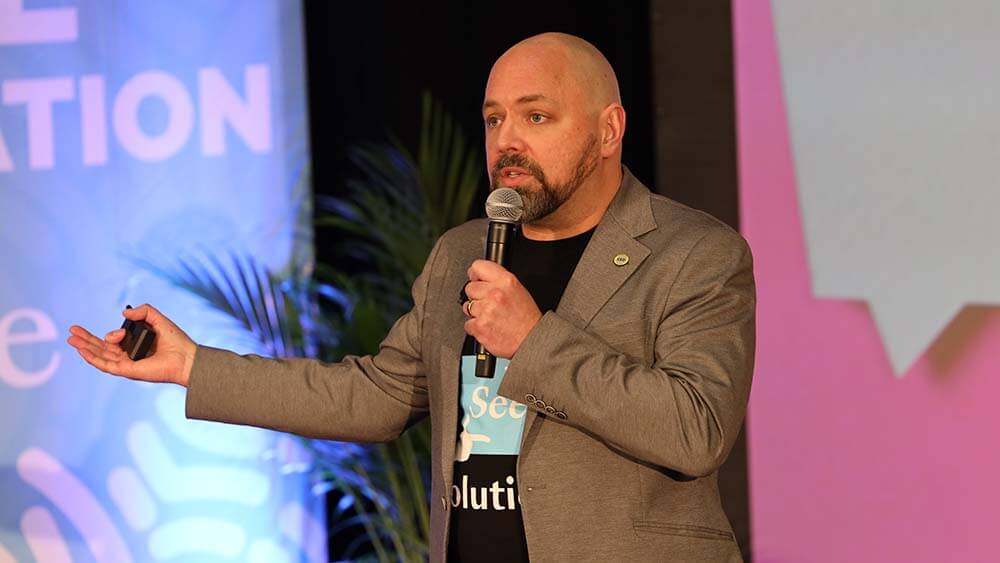
Anthony Vade, Anthony Vade, event experience strategy director of Encore, presents “Immersive Reality: The Intersection of Design and Technology” for both digital and in-person audiences. (Whatever Media Group)
How can event organizers navigate the challenges that come with building immersive experiences that will take their events to the next level? In the Monday Convening Leaders 23 session, “Immersive Reality: The Intersection of Design and Technology,” Anthony Vade, event experience strategy director of Encore, walked both digital and in-person attendees through some of Encore’s most successful immersive experience builds, the psychology behind immersive experiences, and the “pitfalls and precipices” event organizers will encounter on their journey to creating an innovative, all-encompassing event for their attendees.
“The temptation is to talk all about the tools and the techniques that we use to create immersive experiences,” Vade said. “But a lot of what we need to get to grips with as well is the behaviors we need to have and the attitudes we need to have to create these kinds of experiences.” Here are some of the roadblocks Vade suggested event organizers prepare for:
Risk Aversion and Stress-based suppression
“We work in one of the most stressful industries and all the meeting planners, managers, and producers out there are [doing] arguably one of the top five most stressful jobs in the world,” he said. “The amygdala is firing off cortisol that has been scientifically proven to negatively impact your ability to empathize, because that stress is breaking down your prefrontal cortex.” The best way to address that, Vade said, is to avoid undertaking any big project alone. “Bring other people, a team approach, into the circle to help you navigate, so that the pressure isn’t all on you.”
Prejudice and Insecurity
This is what Vade defines as falling back to what an event “should be” based on the way it was held previously because it’s easier, or because the event — or the budget — is perceived to be too small. “But that’s not a reason that you shouldn’t seek to heighten your experience design and make things more immersive,” Vade said.
Difficult Conversations with Leadership
“As you go to your C-suite to talk about how you’re going to innovate your event — that’s a mountain you need to climb,” Vade said. Event organizers should be prepared to pitch an immersive event to their CEO with the understanding that it will cost a bit more money, Vade said, and be ready to explain how the immersive experience will enhance the value of the event. “Otherwise,” Vade said, “they’re going to pick you apart and they’re going to pick apart every idea you put forward.”
To learn about Encore’s case studies of successful immersive events they’ve built, view the “Immersive Reality: The Intersection of Design and Technology” session in the CL Library.
Casey Gale is managing editor of Convene.
